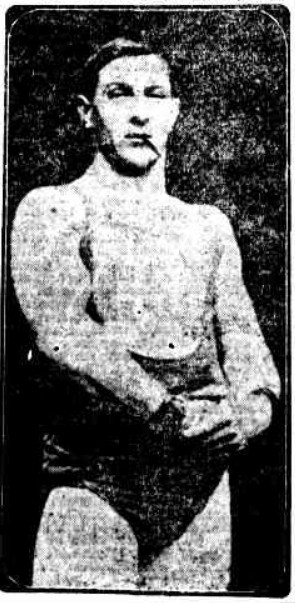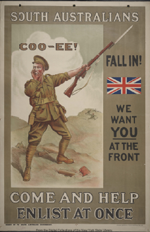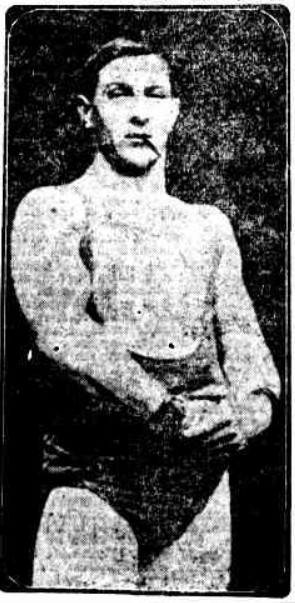
Peter MCGREGOR
Eyes blue, Hair dark, Complexion fresh
Peter McGregor – The Strongman from Glasgow
Can you help us identify Peter?
Peter was killed in Action at Fromelles. As part of the 32nd Battalion he was positioned near where the Germans collected soldiers who were later buried at Pheasant Wood. There is a chance he might be identified, but we need help. We are still searching for suitable family DNA donors.
In 2008 a mass grave was found at Fromelles, a grave that the Germans dug for 250 (Australian) bodies they recovered after the battle.
Family have come forward to help.
See the DNA box at the end of the story for what we do know about his family.
Early Life
Peter was born in 1882 in Glasgow, Scotland, to Peter McGregor (1858-1917) and Helen nee Watt (1858-1923) . His father was a marine fireman who later worked aboard the SS Ophir, and the family lived in Glasgow’s Barony and Kelvinhaugh districts during the 1890s and early 1900s. Peter was the eldest of six children born in Glasgow:
- Peter , 1882-1916
- Margaret Ferguson, 1885-1972 m Major Duncan B Mills
- Gregor , 1887- 1948
- Helen/Ellen, 1889
- Mary Elizabeth, 1891
- Rob Roy, 1893
At the age of 23, Peter migrated to Australia, arriving in Sydney on 20 October 1905 as crew aboard the Ophir. He later settled in South Australia, and in 1910 married Winifred Persis Knuckey (1883-1956) in Adelaide. His parents and three youngest siblings Ellen, Mary and Rob Roy arrived on the Marathon in 1911 . They settled in Port Melbourne. His sister Margaret arrived in 1921 with husband Duncan Mills and daughter Marjory aged 9. Gregor also found his way to Yarraville working as an oiler in 1919. Peter and Winifred had two children:
- Peter Ferguson McGregor, born before the war, who would later be remembered in tributes as showing early promise as a boxer like his father.
- Helen Louise McGregor (1914–1914), who tragically died in infancy.
In the years before enlistment, Peter worked various jobs, including as a barman in Adelaide, and later as a waterside worker in Port Augusta, a hub where rail and shipping routes met.
A Champion Athlete
Peter was a formidable force in the early 20th-century world of strength athletics. He began his athletic career in Scotland, whereby the age of 19 he was runner-up for the Scottish weightlifting championship, and the following year he remained unbeaten. He soon expanded into boxing and wrestling, beginning a career that took him across Scotland, England, and Europe. He defeated several top-tier British wrestlers, including Showell of Birmingham, Shrine of Portsmouth, and Hill of Caxton, and even defeated Homewood of Strood in Greco-Roman contests.
In weightlifting, Peter claimed:
- Right-hand lift: 210 lbs
- Left-hand lift: 183 lbs
- Two-handed barbell: 254 lbs
- Two dumbbells simultaneously: 110 lbs (right) + 111 lbs (left)
- He carried a 476 lb sandbag with a man sitting on top off a stage — a stunt combining brute strength with showmanship.
He once attempted to break William Miller’s famous “straight-arm lift” record — lifting 101.5 lbs from side to shoulder height. While disallowed due to technique, it was recognised as a record in its own right. Peter was also one of the earliest British wrestlers to test himself against the rising martial art of jiu-jitsu, facing Japanese champion Yukio Tani. Though defeated, he was awarded a gold medal for holding out longer than any other European contender in Tani’s open challenge. Tani’s compatriot, Taro Miyake, would later defeat him — but Peter had already left a strong impression in the wrestling community.
After migrating to Australia in 1906, Peter resumed his wrestling career with immediate impact. In Melbourne, he challenged Bhuttan Singh for the Australian Heavyweight title in July 1906. Singh won 2–1, though some reports claimed he only retained the title through foul play. Singh would never defend the title again, losing it to Clarence Weber soon after.
Peter’s most active wrestling year in Australia was 1908, when he:
- Lost a rematch with Bhuttan Singh in Broken Hill — again amidst accusations of “brutalising” tactics,
- Defeated Gus Rennert (a German wrestler) in Adelaide for the South Australian Heavyweight title,
- Defeated G. Kopach in Port Pirie, his home town,
- And won a best-of-five match against Professor Ryugoro Shima, a Japanese jiu-jitsu master based in Adelaide, 3–2.
Their rivalry was notable. In a subsequent match, Peter suffered a broken shoulder blade in bout six of a best-of-seven series. Despite the injury, he returned to the mat for bout seven and was defeated. A later nine-bout rematch in Port Pirie saw Peter and Shima draw most of the bouts. Peter was ahead in points but exhausted, and Shima was awarded the contest. Even outside the ring, Peter kept competing. He was known as a proud Scotsman who played the bagpipes, winning prizes at Broken Hill in pipe band competitions.
“During his career McGregor has won high honors in weight-lifting, boxing, ju-jitsu and wrestling… like a true Scotsman he is fond of the bagpipes.”[[Source: The Port Augusta Dispatch, 31 March 1911, http://nla.gov.au/nla.news-article202955128]]
By 1911, he had transitioned to working as a waterside labourer in Port Augusta, though he continued to compete sporadically in local bouts. His public profile as a sportsman remained strong, especially in regional South Australia where wrestling remained popular well into the 1910s.
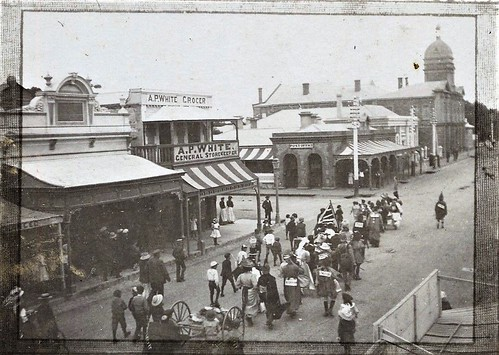
Off to War
By 1915, Peter McGregor was living in Port Augusta, working on the wharves where the rail lines met the sea. Though in his early thirties, Peter was still physically imposing and widely known for his discipline, stamina, and courage — qualities he had honed over years in the wrestling ring and weightlifting arenas.
When war broke out, Peter did not hesitate. He enlisted in the Australian Imperial Force on 12 October 1915 in Adelaide at the age of 33. His previous military experience — three years in the Royal Navy and five years in a military band — made him well suited to life in the ranks. He was assigned to the 3rd Reinforcements of the 32nd Battalion, part of the newly formed 8th Brigade, and embarked aboard HMAT A28 Miltiades on 7 February 1916.
After a brief period in Egypt for training and consolidation, Peter arrived in France with his unit in June 1916, just weeks before the disastrous attack at Fromelles. He was promoted to Lance Corporal on 26 May 1916 while stationed at Ferry Post in Egypt — a mark of confidence in his leadership from his superiors. Peter joined A Company of the 32nd Battalion, which formed part of the left flank of the Australian assault plan. He and his comrades had little time to adjust to the Western Front before they were rushed into what would become one of the most devastating battles in Australian military history.
Fromelles
Only weeks after arriving in France, the 32nd Battalion were rushed into battle at Fromelles on 19–20 July 1916 — their first action on the Western Front.
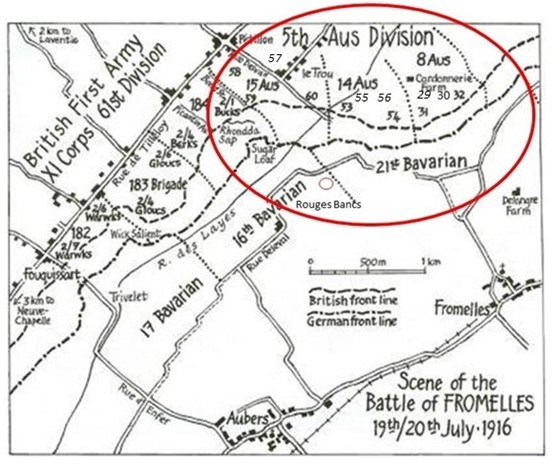
The 32nd moved to the Front on 14 July and were into the trenches for the first time on 16 July, in preparation for an assault on the German trenches at Fromelles.
D Company’s Lieutenant Sam Mills’ letters home were optimistic for the coming battle:
“We are not doing much work now, just enough to keep us fit—mostly route marching and helmet drill. We have our gas helmets and steel helmets, so we are prepared for anything. They are both very good, so a man is pretty safe.”
On the 17th they were reconnoitring the trenches and cutting passages through the wires, preparing for an attack, but it was delayed due to the weather.
The Australian 8th Brigade, which included the 32nd Battalion, were to cross about 100 metres of No-Man’s-Land and assault the German trenches on the left flank of the Allied attack. Being on the extreme left flank made their job even more difficult, as not only did they have to protect themselves from the front, but they also had to block off the Germans on their left to prevent them from circling behind.
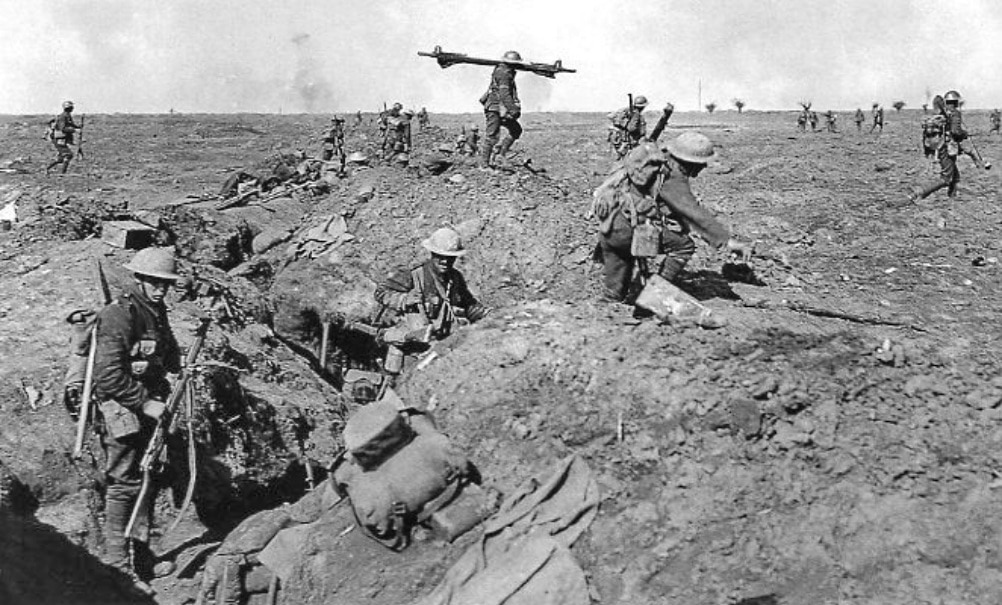
Soldats australiens dans les tranchées de Fromelles
All were in position by 5.45 PM and the charge over the parapet began at 5.53 PM. C Company and A Company, Peter’s unit, were the first and second waves to go, followed by B and D Companies. The first waves did not immediately charge the German lines; they went out into No-Man’s-Land and laid down, waiting for the British bombardment to lift.
At 6.00 PM, the German lines were rushed. The Australians immediately suffered heavy casualties from artillery and German rifle and machine-gun fire.
The 32nd were successful in their initial assaults and by 6.30 PM were in control of the Germans’ first-line system. Fighting continued through the night. The Australians made a charge at the main German line, but they were low on grenades, under fire from behind and from the machine gun emplacement at Delangre Farm, and so far advanced they were being shelled by both sides.
At 4.00 AM the Germans began an attack from the Australians’ exposed left flank. Because the rear trench had been left almost empty due to the forward advance, the Germans were able to flank and surround the position. At 5.30 AM the Germans attacked from both flanks in force with bombing parties:
“The enemy swarmed in and the retirement across No Man’s Land resembled shambles, the enemy artillery and machine guns doing deadly damage.”
The 32nd Battalion suffered appalling losses: 718 casualties out of 800 men, including 90% of its front-line strength.
Among those killed was Lance Corporal Peter McGregor of A Company, 32nd Battalion. Initially listed as missing, his fate was later confirmed through Red Cross eyewitness accounts.
From 2028 Private Donald Lloyd FINEY, A Company, 32nd Battalion:
He says he saw the soldier killed at Fleurbaix on No Man's Land, was close beside him when he fell and could see he was dead.
From 2077 Private Leonard MURCOTT, 32nd Battalion:
He was shot through the head just as he went over the top on July 19th against Fleurbaix. I did not see him myself but I distinctly remember one of my mates telling me about him. It was not on the 20th as you say.
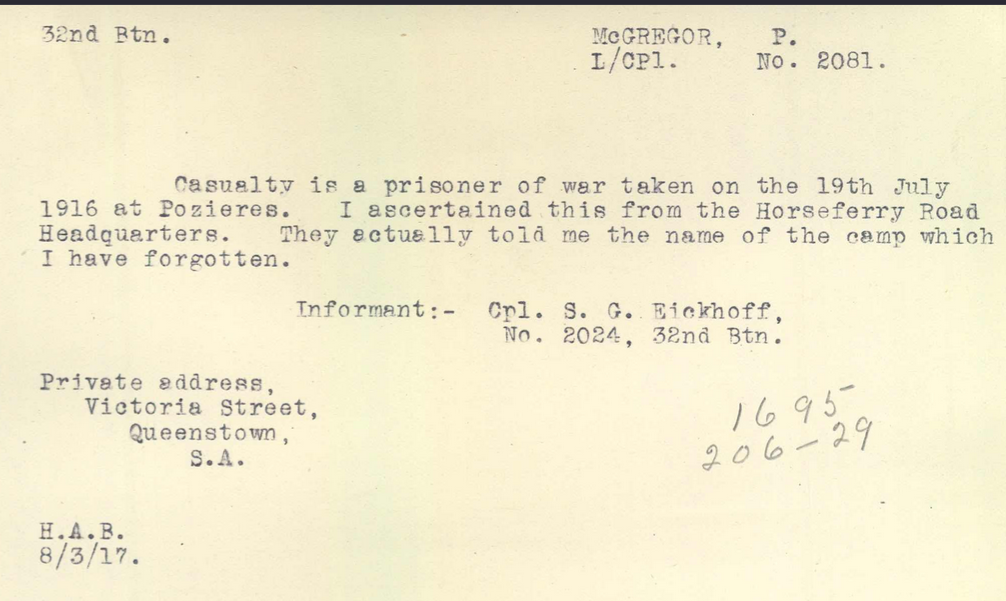
Another account had him taken as a prisoner of war.
Peter’s body was never recovered. After the disastrous assault at Fromelles, Peter was initially listed as “missing in action.” For many months, his wife Winifred endured the agonising uncertainty shared by hundreds of Australian families who received no definitive news about their loved ones.
On the home front, Peter’s name and story continued to be remembered in the wrestling and boxing communities, and especially by his family.
`“In proud and loving memory of Corporal Peter McGregor, 32nd Battalion, killed in action July 19, 1916 — ‘Faithful unto death.’”
—Inserted by his wife Winifred, and son Peter Ferguson McGregor
Source: The Advertiser (Adelaide), 19 July 1919, p. 8. http://nla.gov.au/nla.news-article5606829
“The many friends of Peter McGregor, well known in athletic circles, will be sorry to hear that he has been posted as missing since July 19.”
Eventually, witness statements confirmed the worst: Peter had been killed in No-Man’s-Land on the night of 19 July 1916, during the first wave of the assault. His body was never recovered, and he has no known grave.
Peter is commemorated at:
- VC Corner Australian Cemetery Memorial, Fromelles (Panel 4)
- Australian War Memorial Roll of Honour, Panel 120
- Adelaide National War Memorial
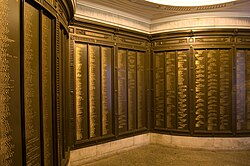
A detailed obituary published in Sport in 1917 reflected the esteem in which Peter was held, not only as a soldier, but as one of the leading athletes in South Australia prior to the war. The tribute celebrated his many achievements and noted that his young son was already “showing promise with the gloves”:
“Peter was in the position of Lance-Corporal at the time of his death, and was respected and esteemed by both officers and men of his battalion… He leaves a bonny lad, who promises to follow in his father’s footsteps as an athlete of repute.”
Other memorials and career retrospectives continued to appear in regional newspapers and sporting publications, recounting his contests against Bhuttan Singh, Professor Shima, and his rivalry with jiu-jitsu master Yukio Tani.
His story remains one of the more compelling legacies among the athletes of the AIF — a man who held records in strength, competed in theatres across two continents, and ultimately gave his life in service of his adopted country.In October 1917, a poem titled “Peter McGregor” was published in Sport magazine. It was written by C. Vaude, one half of the performing duo Vaude & Verne, who knew Peter from his time in the athletic and entertainment circuits.
The poem offers a rare, lyrical glimpse into the affection and admiration Peter inspired in his community — not just for his physical strength, but for his moral resolve and self-sacrifice
PETER McGREGOR
A bonnie lad fra Scotland, not an absent-minded beggar.
But a sport of sports, and known to all as good old Pete MacGregor.
He had no time for things unfair, and nobody was wiser.
When he wrestled with his conscience to overthrow the Kaiser,
He left a home in Adelaide, you must when you've enlisted.
To see the Hun upon the run, bold Peter he insisted,
To go to France, and take a chance with bayonet, bomb, or rifle,
And give his life to right a wrong, he reckoned just a trifle,
But bullets come as bullets do, before you know they're coming,
And Peter found himself just where those bullets were a humming.
And one or two, and maybe three, just found a home in Pete,
And he just left this land of strife to where things may be sweeter.
When Gabriel's horn has flourished loud Creation and its wife,
They will say, "Here's Peter Mac Gregor, he gave his all, his life.
It's great to think a like that could just make up his mind
To give life for humanity, when he left the world behind."
C. Vaude (of Vaude & Verne)
Source: PETER McGREGOR, Sport (Adelaide), 12 October 1917, p. 6. http://nla.gov.au/nla.news-article215861735
Can You Help Us Identify Peter?
Peter McGregor’s remains were never recovered, and no known grave was found. Like many of his comrades, it is highly probable that Peter was left behind in No-Man’s-Land or buried by German forces after the failed assault at Fromelles.
In recent years, family members have come forward and provided DNA in support of efforts to identify Peter among the unknown soldiers reburied at Pheasant Wood. His name remains among those still to be formally identified.
DNA has been provided by family members for
| Soldier | Peter McGregor (c.1882–1916) married Winifred Knuckey |
| Children | Helen Louise McGregor (1914–1914) | ||
| Peter Ferguson McGregor bef 1914 |
| Parents | Peter McGregor and Helen nee WATT, Glasgow, Scotland |
| Siblings | Margaret McGregor (b. 1885) | ||
| Gregor McGregor (b. 1887) | |||
| Ellen McGregor (b. 1889) | |||
| Mary McGregor (b. 1891) | |||
| Rob Roy McGregor (b. 1893) |
| Grandparents | |||
| Paternal | Peter McGregor and Margaret Ferguson | ||
| Maternal | John Watt and Margaret McBain |
Links to Official Records
Seeking DNA Donors

Contacts
(Contact: carla@fromelles.info or geoffrey@fromelles.info).
(Contact: army.uwc@defence.gov.au or phone 1800 019 090).
Donations
If you are able, please contribute to the upkeep of this resource.
(Contact: bill@fromelles.info ).
